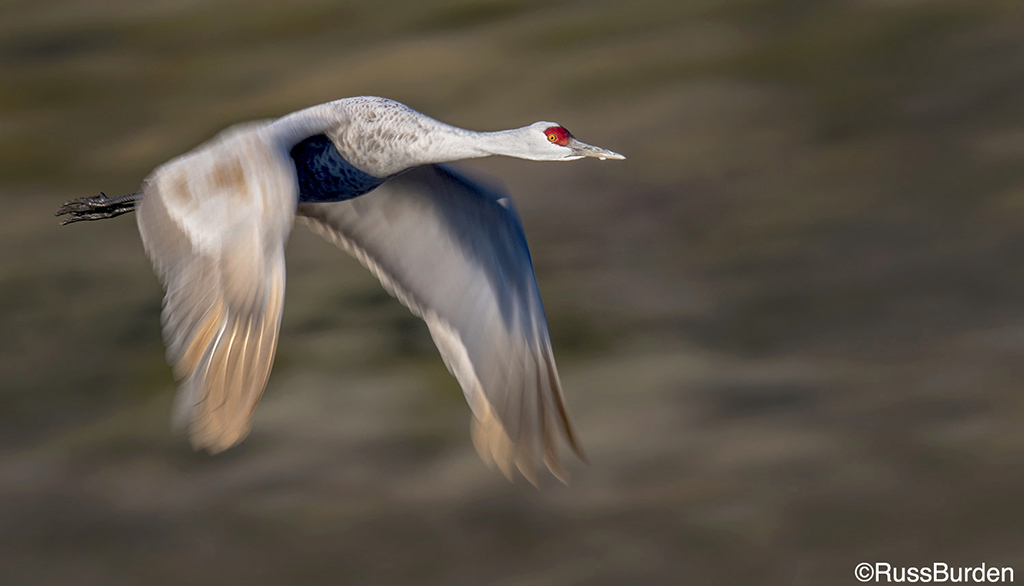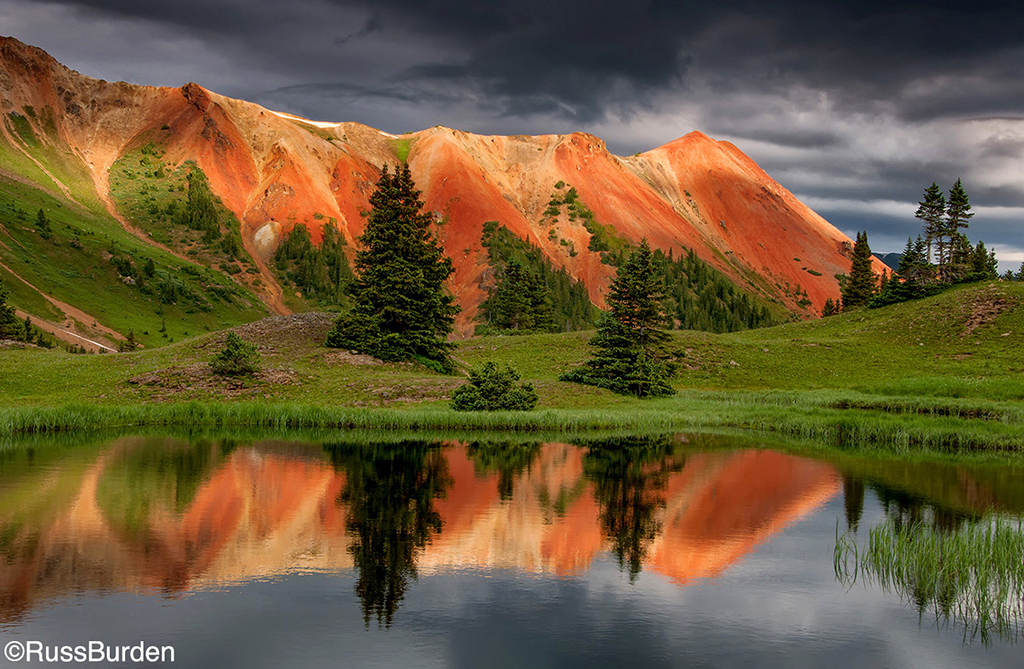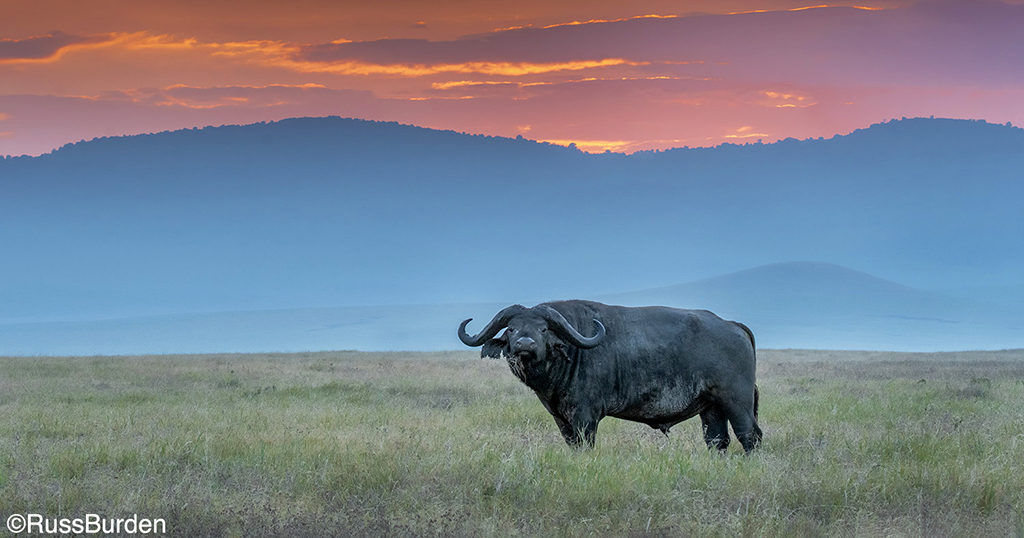Advertisement
Advertisement
Read Next

10 Action In Nature Quick Tips
As you know, nature photography isn’t...
Critically Sharp Captures
To obtain excellent-quality, tack-sharp...
Get Drenched In A Downpour Of Pixels

Get Drenched In A Downpour Of Pixels
Over 70 percent of the Earth’s...
The Amount Of Light Dictates The Strategy
Thick gray clouds, dawn, interiors,...Advertisement


Beyond Visible Light: Color Infrared Photography
Back in analog days, when I was photographing just about everything with black-and-white infrared film, I never gave a thought to shooting color infrared. The slide film’s palette of pinks, yellows and cyans, typified by the fisheye cover of Jimi Hendrix’s Are You Experienced, was too far-out for me.
Now, decades later, I find myself shooting color infrared because aside from being able to change it to one’s liking in post-production, it just looks different—and better—when captured digitally. Digital infrared is still those crazy wavelengths beyond the red end of visible light—but combine it with the remarkable flexibility of digital capture’s RAW files, and you have a marriage made in photographic heaven.
Cranes Feeding At Sunset, Bosque Del Apache National Wildlife Refuge
At first, I converted all my digital infrared files to black-and-white. For a few years, I shot with the Fujifilm UVIR, a DSLR really designed for forensic purposes, but I eventually graduated to a Nikon D600 converted for shooting color infrared by LifePixel, one of several companies that perform the service. LifePixel offers a range of “filter” options installed over the camera sensor that enable you to record progressively longer waves of infrared radiation. The filters that allow the longest infrared wavelengths to reach the sensor produce image files containing very little (if any) color, given that those wavelengths are further from the color-rich spectrum of visible light. I chose the company’s Super Color filter, which has a less-deep “cutoff” (590nm, for those in the know) and therefore records quite a lot of color information, though the RAW files are strongly reddish. My reasoning was that the resulting files’ color would allow me to use the individual color sliders in Photoshop’s black-and-white conversion tool to control tonal densities and interrelationships in the black-and-white image.
At times, I liked the color file itself and used it for my final image—though with quite a lot of post-production work to make it look a bit more naturalistic. This includes reducing the red’s intensity by turning down Photoshop’s red saturation slider. That said, color infrared, at least the way I use it, almost always creates a late-day or sunset feeling, even when those warm colors aren’t present in a scene. This is largely because it gives the sky—whether blue or not—a red, orange or yellow cast.
The other colors captured in RAW files from my color infrared camera include blue-greens produced by foliage, and I work with these to make the photograph look less far-out. I’m not a big fan of channel swapping, the technique in which you reverse an infrared image’s red and blue channels in Photoshop to create an intensely blue sky and golden foliage, for the same reason I wasn’t a fan of color infrared film—though it might work perfectly well for an album cover.
One last point before getting into the specifics of each image: Photoshop’s RAW converter seems to get confused by the overwhelming red of color infrared capture. I get better results using Nikon’s own Capture NX-D RAW-conversion software to turn the camera’s proprietary NEF files into TIFFs, color-balancing them by clicking the eyedropper tool on the most neutral point I can find in the image. This helps reduce some of the overabundance of red. If your camera maker offers processing software, you might try it.
The effect I get this way isn’t something you can or should use all the time, and most of my photographs are still in black-and-white. (I’ve shot them with a Nikon D800 converted to LifePixel’s Standard Infrared filter, which gives me fairly monochrome RAW files.) As the images here show, though, with the right subject and some careful post-production work, color infrared capture lets you create a dramatic yet subtle image that can rival any great sunset.
Cranes Feeding At Sunset, Bosque Del Apache National Wildlife Refuge
The light was pretty warm already when I photographed these cranes eating the corn that’s fed to them in winter at New Mexico’s Bosque del Apache National Wildlife Refuge. Infrared turned the sky yellowish-orange, and that color is reflected in the marshy pools of the Rio Grande Valley. I took the photograph handheld, braced on the top of my car, with a Nikon 70-200mm ƒ/4 and 1.4x teleconverter. The lens was zoomed all the way in, giving me an effective focal length of 280mm that helped create the picture’s flat, “compressed” appearance. I kept the shutter speed high enough (1/250 sec. second) to reasonably freeze the red-winged blackbirds flying in front of the mountains and stopped down to ƒ/13 to make sure everything was sharp from front to back.
The trees on the mountains, and, to a lesser extent, the brush surrounding the water, have the typical blue-green (cyan) color that digital infrared capture renders foliage. It was a little too blue for my taste, so I altered it in Photoshop to make it greener and therefore natural, though I didn’t take it all the way. Instead of using saturation sliders to do this, I went into the Selective Color control, increasing the yellow in the image’s blues and reducing magenta in the image’s greens, among a few other adjustments. Selective Color isn’t a control typically used much by photographers, but one I’ve found useful for subtle tweaking of color with infrared.
Small Pond At Dusk, Stamford, Connecticut
Small Pond At Dusk, Stamford, Connecticut
Infrared is usually considered a bright-light medium that’s best in direct sun, which contains a lot of the invisible infrared radiation that produces the distinctive effects. Digital infrared has taught me that there’s often light—or infrared wavelengths, anyway—in the dark. In this case, the only direct light on the pond was from dusk, after the sun had dropped below the horizon behind the trees the water reflects. Even the sunset’s light was dimming. My eyes could see the reflection, which makes up the entirety of this image, but I wasn’t convinced that the camera would pick up much of anything.
I didn’t want to deal with the dim light by using a large aperture, a high ISO or both. I wanted enough depth of field to maintain sharpness in both the leaves floating in the water and the reflection of the trees in the background. I also didn’t want the noise that a high ISO would cause. So I put the camera on a tripod, set the ISO to 400, stopped the lens down to ƒ/16 and chose an exposure time of half a second—a far cry from the 1/125 to 1/250 sec. range of typical bright-light infrared shooting. The slow speed blurred the relatively calm water enough to “smear” the colors of the reflection but kept the floating leaves sharp.
I was pretty surprised by what my camera’s LCD showed me. The RAW capture was darker and less saturated than the image here, so after lightening it, I used Photoshop’s individual color saturation sliders to selectively increase the intensity of the different colors in the reflection—the orange from the sky and the blues and greens of the foliage. (The natural yellow of some of the floating leaves may be due their loss of chlorophyll, which is what reflects near-infrared radiation from plants.) The result has the feeling of a true fall sunset in New England, except that the sun was long gone.
Cypress Tendons, Florida Everglades
Cypress Tendons, Florida Everglades
I often use my color infrared camera to shoot reflections in swamps. They offer a dense scheme of visual layers and a complex color palette, one created by the superimposition of the lighter, greenish-blue foliage and the reddish sky on the rich, tannin-stained water and silty bottom. But when you expose for what’s above the water—here, a bald cypress trunk—those shadows and reflections look very dark in the RAW capture. The RAW file’s buried information came to the rescue in this image, allowing me to recover plenty of detail from them. To start, I used sliders in Nikon Capture NX-D to pull in both the highlights and the shadows. The shadows were still pretty flat and murky going into Photoshop, though.
To bring out the reflections of the tree branches and brighten the water-darkened bits of sky between them, I used the on-the-fly masking capabilities of the Viveza plug-in for Photoshop. By dropping control points in various parts of the reflection and adjusting the size of the concentric area they affect, I was able not only to brighten it but also to locally increase contrast and saturation, both of which are reduced when you substantially lighten a dark area. Along with brightness, contrast and saturation, the sliders attached to each control point allowed me to adjust individual colors to make the reflection look consistent throughout. Without Viveza, it would have taken dozens of layer masks to do this.
Tree At Sunrise, Bosque Del Apache National Wildlife Refuge
Tree At Sunrise, Bosque Del Apache National Wildlife Refuge
Distant birds take only a supporting role in this image from the Bosque, wintering grounds for flocks of thousands. Despite appearances, the day dawned with low clouds that kept direct sun from lighting up the scene. The light was so dim, in fact, that I had to set an ISO of 1600 and open up a bit from my preferred aperture of ƒ/11 to ƒ/8. I used a shutter speed of 1/90 sec., fast enough to freeze something moving in the far distance.
Infrared saved the day, turning the subject back into an intensely colored sunrise. The foliage at the base of the tree was unexpectedly drab though, so once the image was in Photoshop, I used Viveza to add green to it. I placed control points at strategic spots along the bottom of the image, expanded the circle just enough to cover the foliage, then turned up the green slider in the control stem that extends from the point. I personally have no qualms about such manipulation, since I’ve never thought of myself as a photographic realist!
Fairy Stone State Park, Virginia
Fairy Stone State Park, Virginia.
Yet another case in which late-day light was reinforced by color infrared’s reddening, this image gets its mirrored effect from my having scrambled down the riverbank at a bridge and shot from a lower position. That perspective and its more glancing angle strengthened the reflection, helping to make the landforms appear to float. It’s always a cool trick to show the tree line in a reflection but crop it out of the top of the frame; in this case, infrared’s strong red sky is almost entirely in the reflection, with just a little bit of the real thing at the upper left.
The image took a lot of local work, however. There was too much blue in the brush at the top of the frame—and in its reflection—so I used Saturation and Selective Color controls to make it greener. The sun was relatively low, and the parts of the riverbanks and surrounding ground it couldn’t reach were flat-looking, so I used Viveza control points to add local contrast and density to them. The area on the right was very bright, so I burned it in, again with control points. (Color infrared can be a very contrasty medium.) The reflection in the water faded almost to black toward the bottom, so I opened it up and increased its contrast, which made the trees’ reflections stand out all the way to the edge of the frame.
Cypress Knees, Avery Island, Louisiana
Cypress Knees, Avery Island, Louisiana
When I shot this picture on Louisiana’s Avery Island, home of the Tabasco-making McIlhenny family, my first thought was that I’d picked up the reflection of its famous sauce. But it was the usual red-hot infrared sky reflected in the pools of a murky bayou, which I cropped tight to place attention on the knobby “knees” that sprout up from bald cypress tree roots. (They never grow into trees!) I shot at a fair distance from the subject with a 125mm focal length, both to flatten it and to get the more glancing angle I needed for a good reflection. Given the relatively long focal length, I stopped down to ƒ/19 to ensure enough depth of field, which required a shutter speed of 1/45 sec., tripod-mounted at ISO 400.
I toned down the red sky’s flaming reflection in Photoshop, using the red slider in Hue/Saturation, to give the image a more naturalistic, sunset-like feeling. Again, color infrared renders foliage with a blue-green range in the RAW capture, as shown in the leaves here. By contrast, the cypress knees had more of a pure blue cast that reminded me of the blue you see in shadows and open shade on a clear day, especially visible early and late. So I actually used the blue slider in Hue/Saturation to increase the blue, creating a nice color contrast with the orange of the reflection.
See more of Russell Hart’s work at russellhartphoto.com.